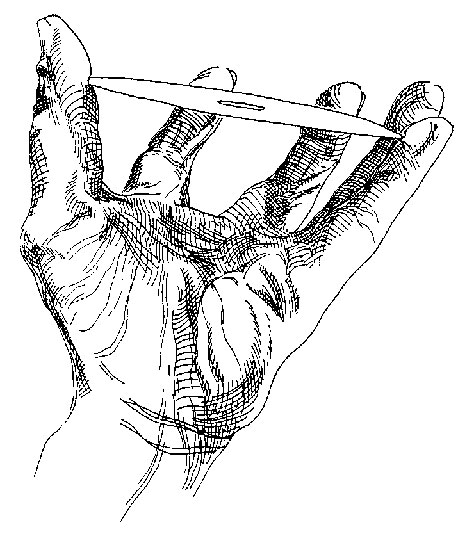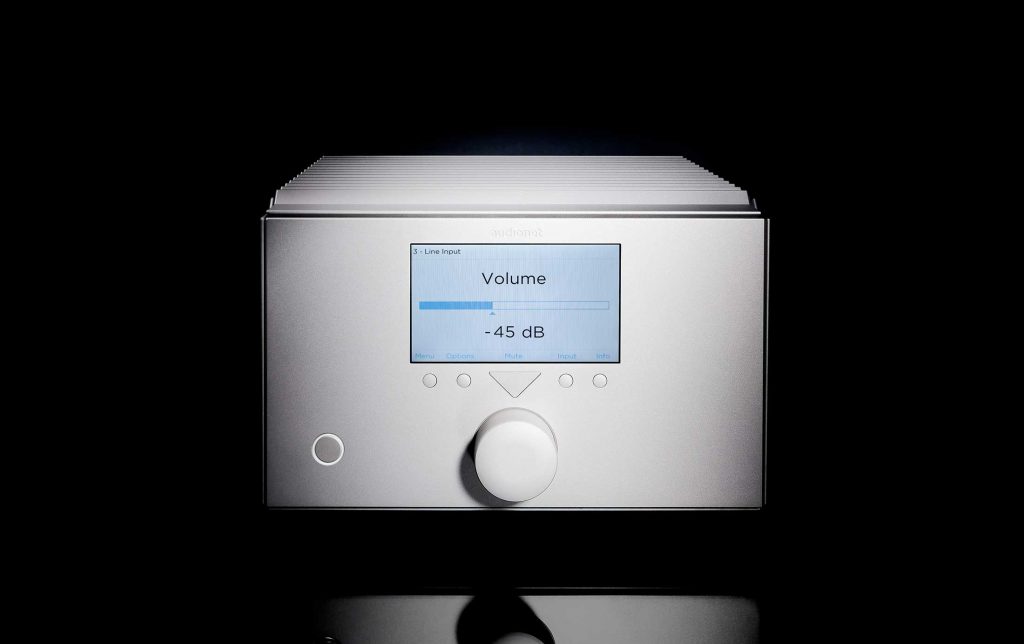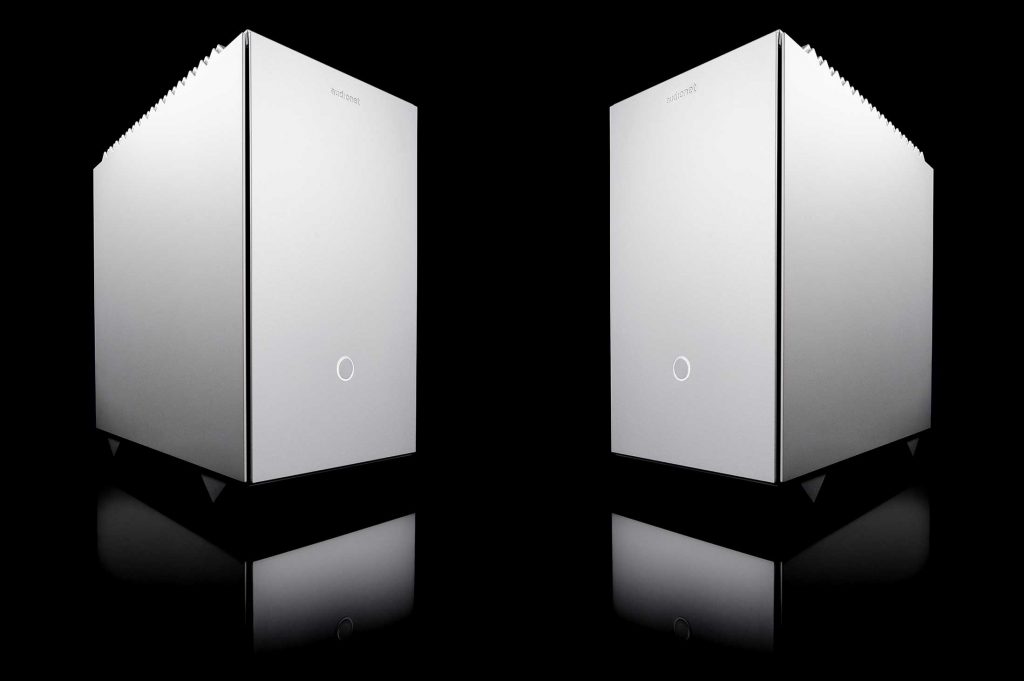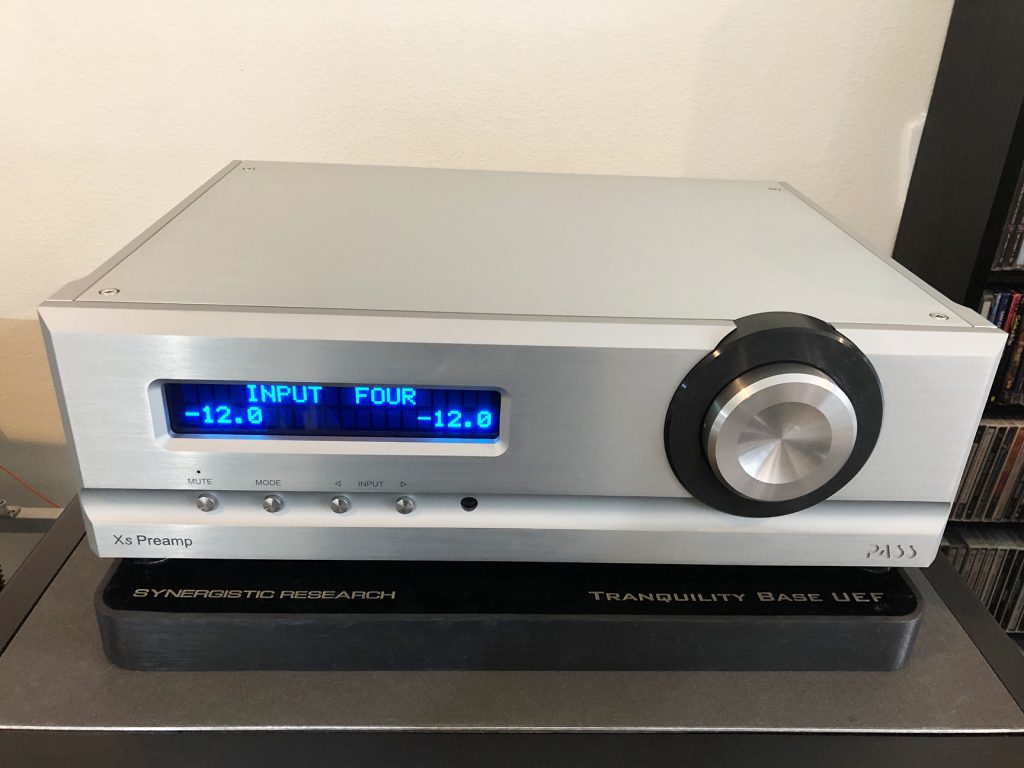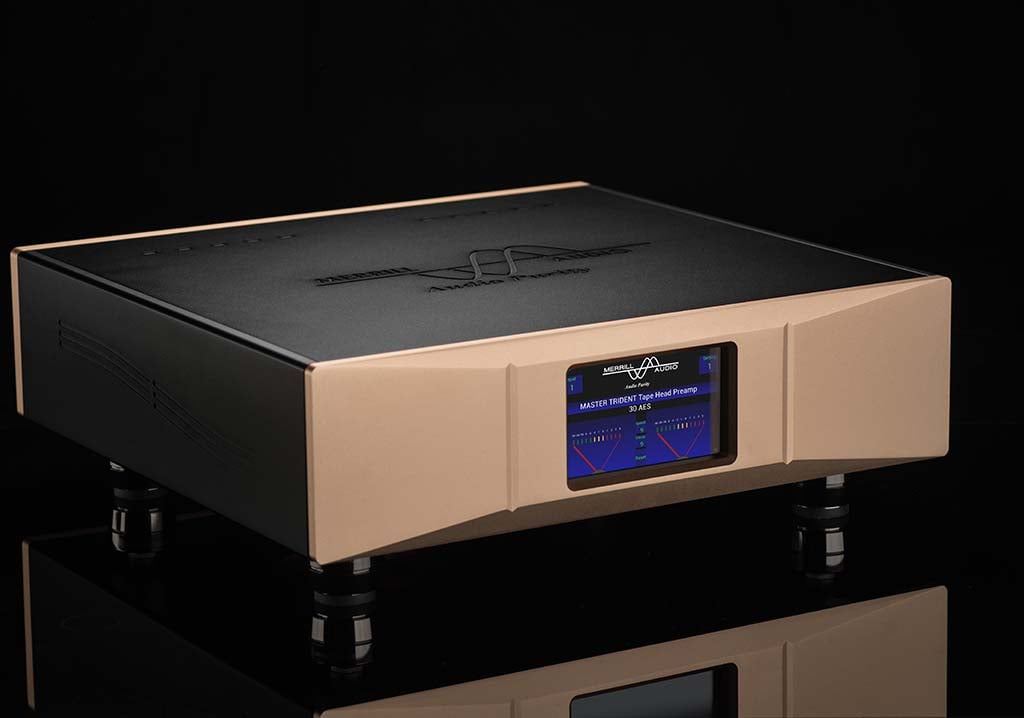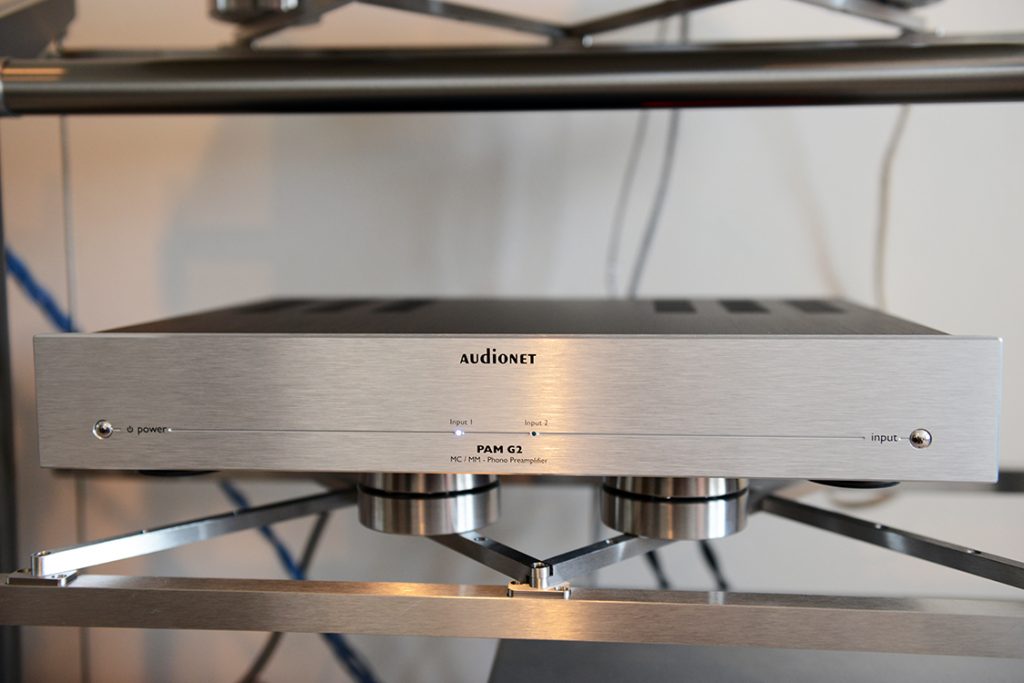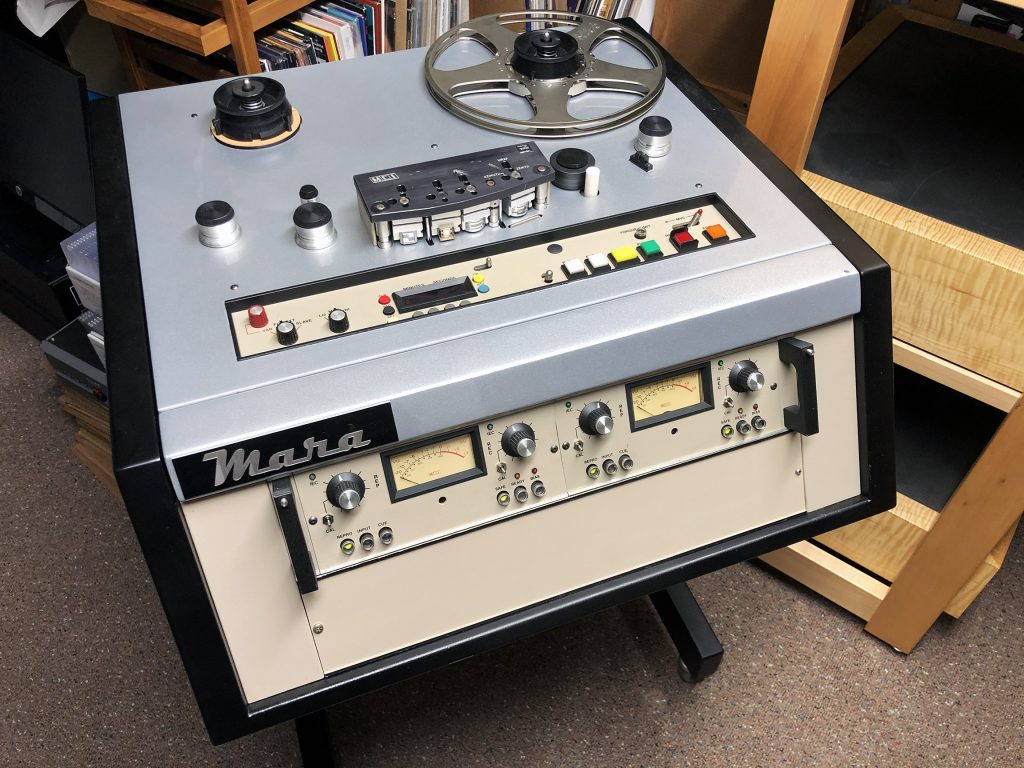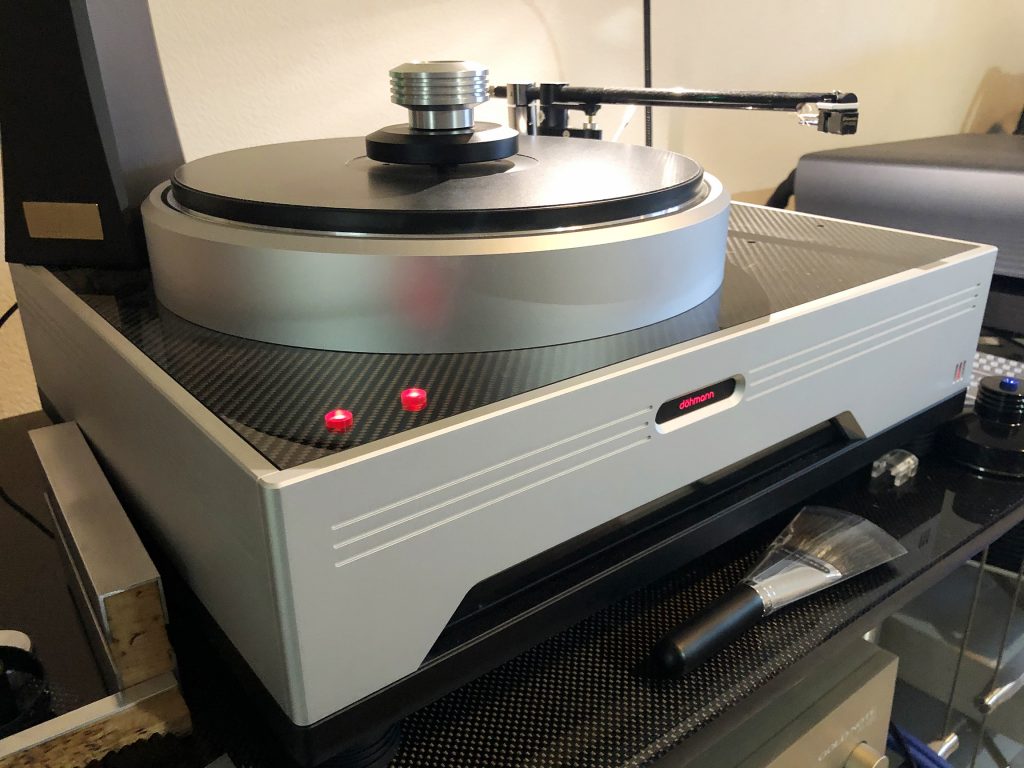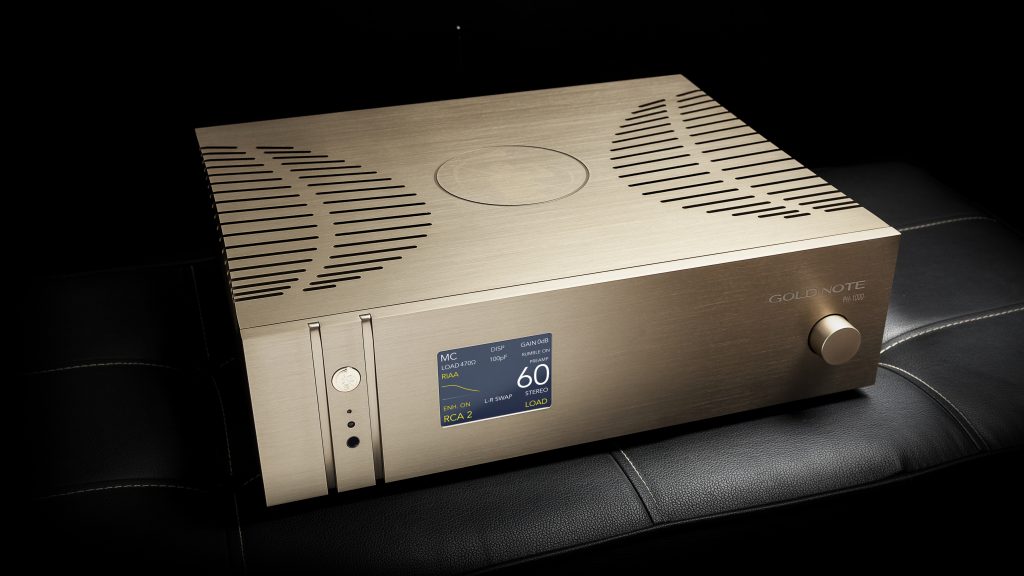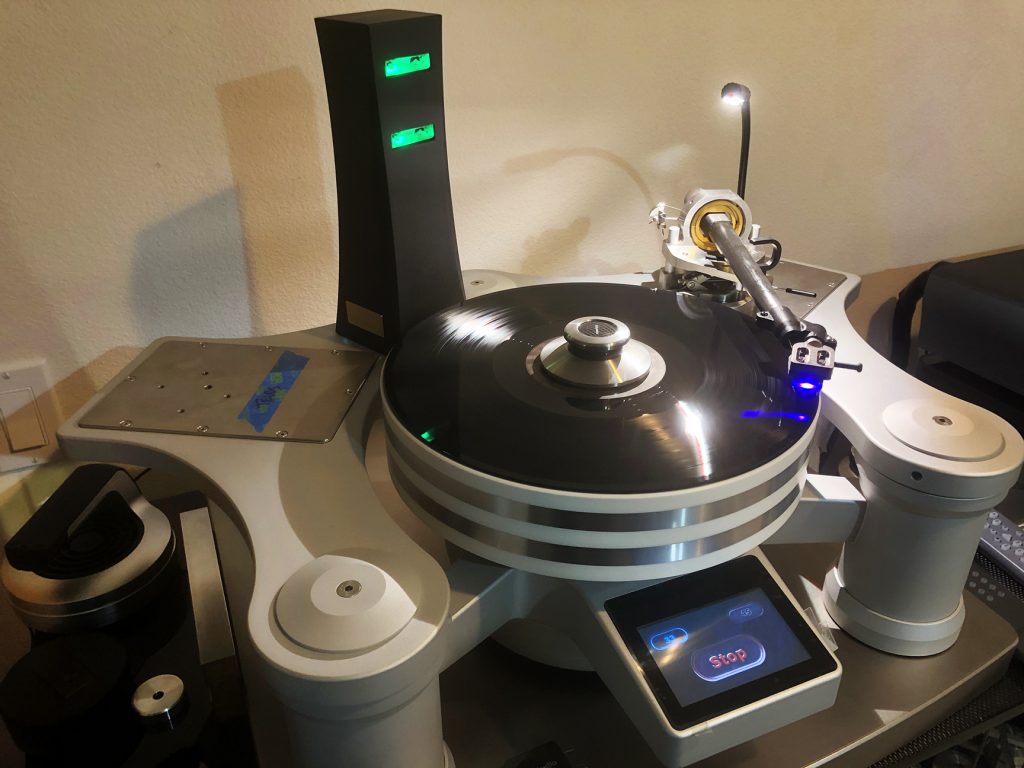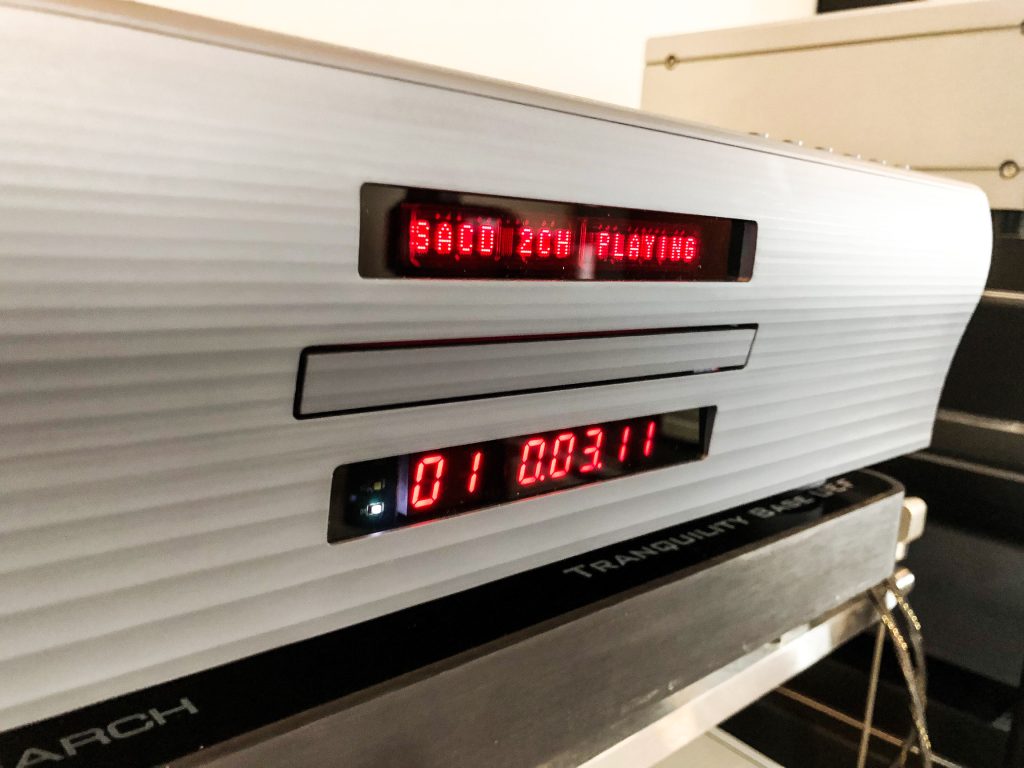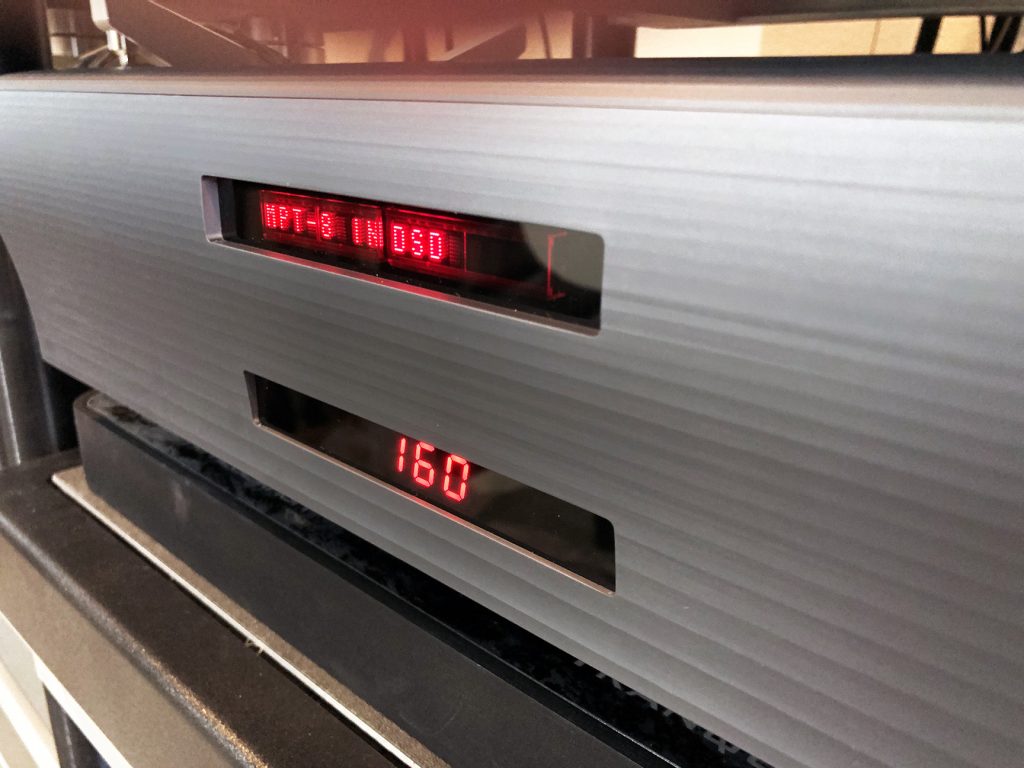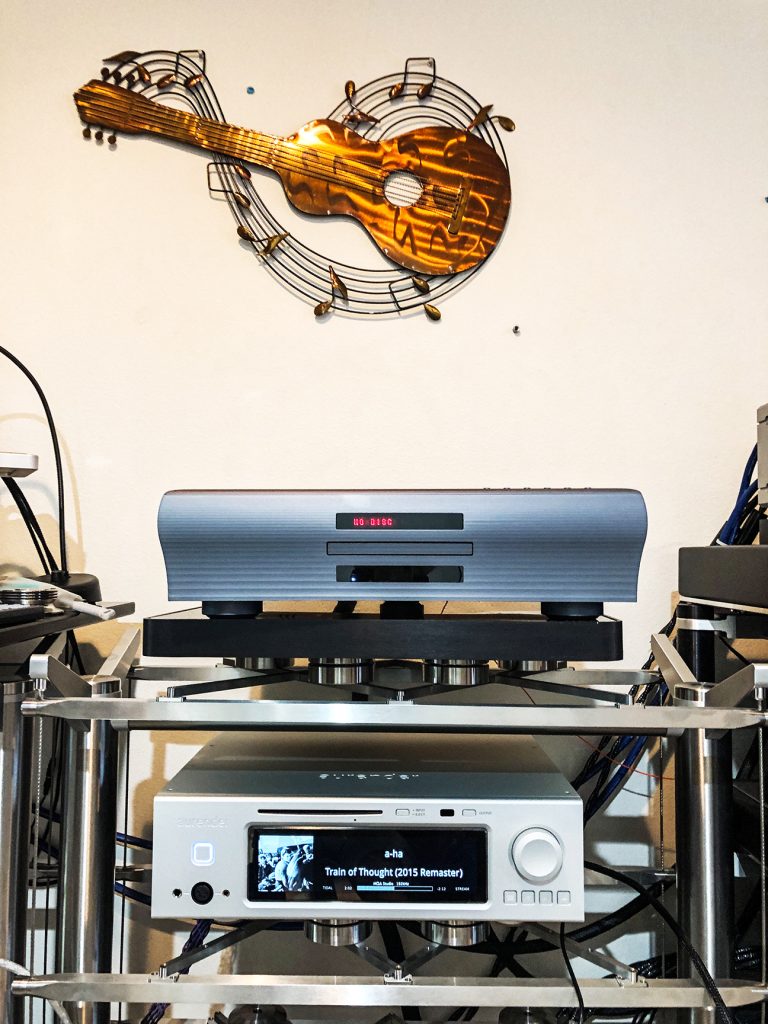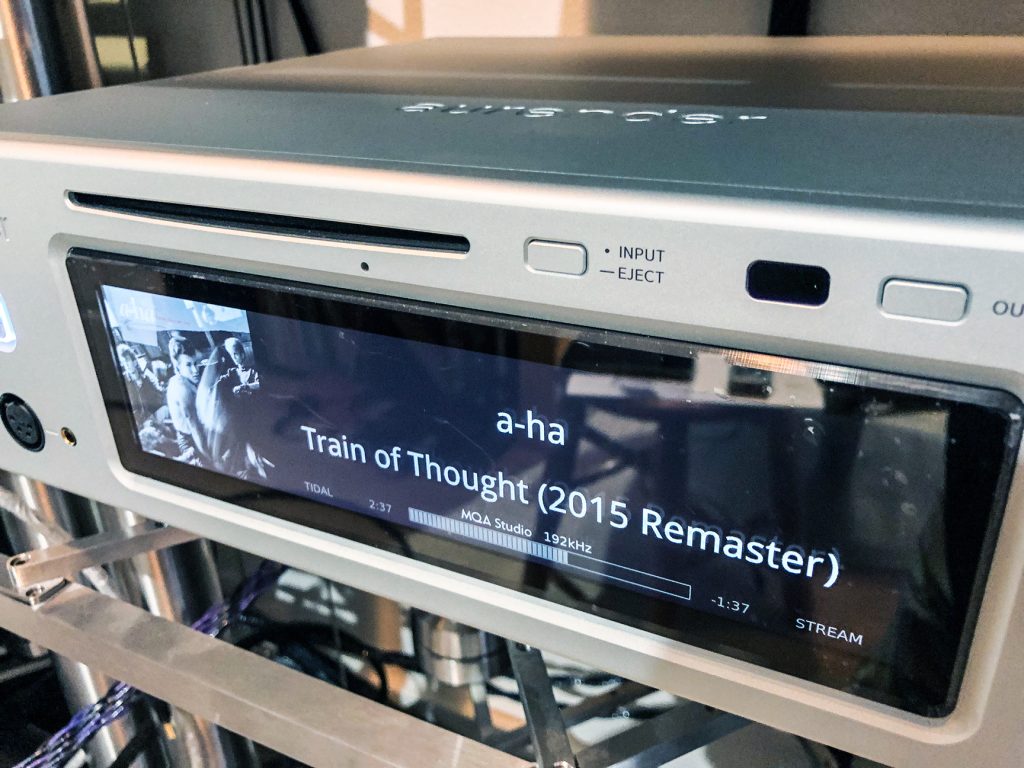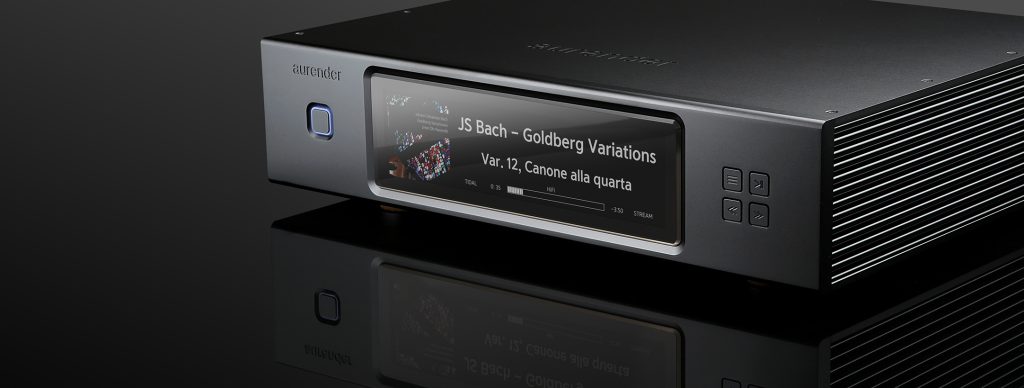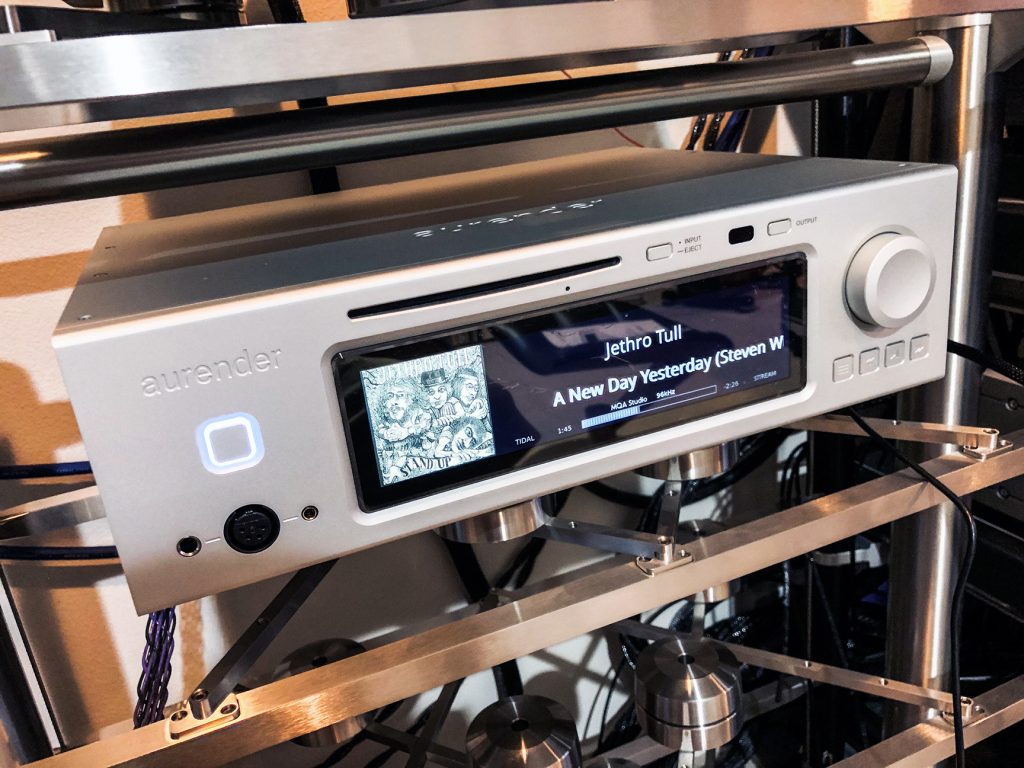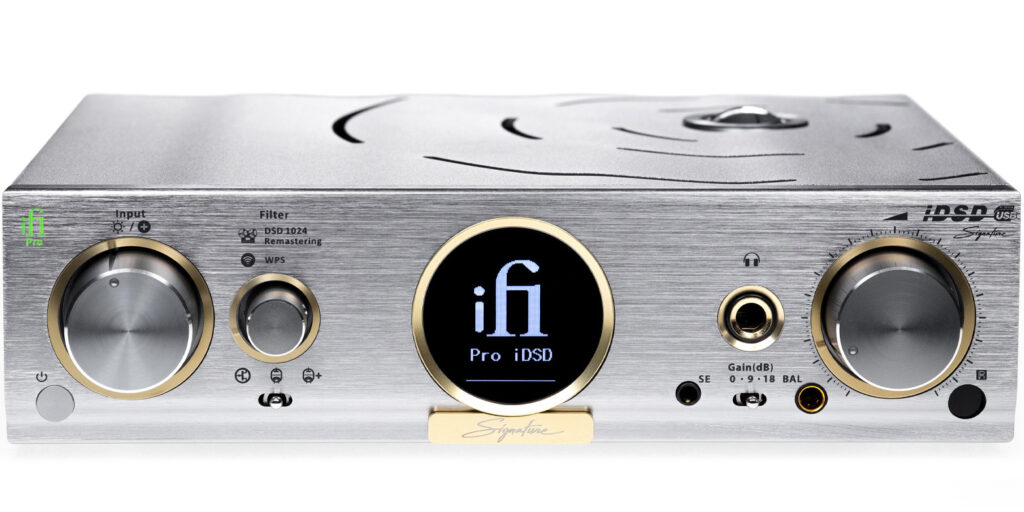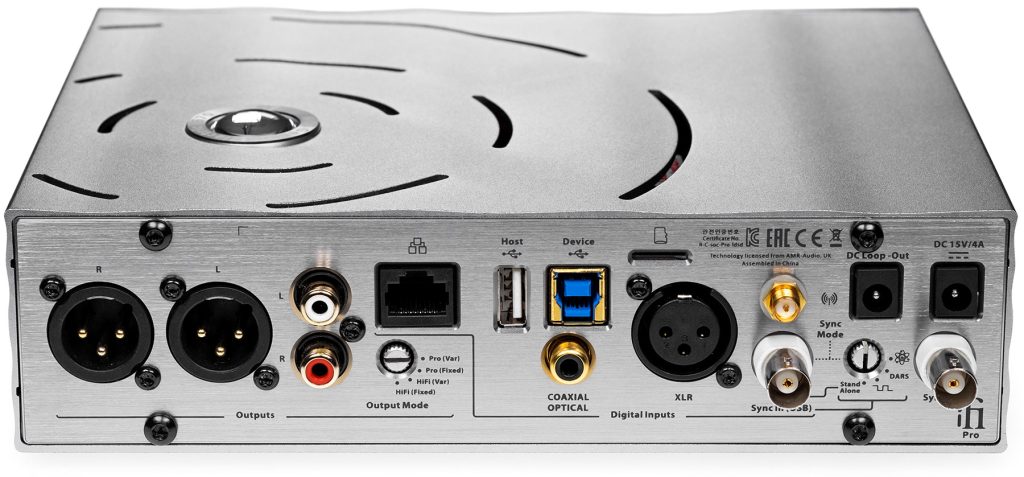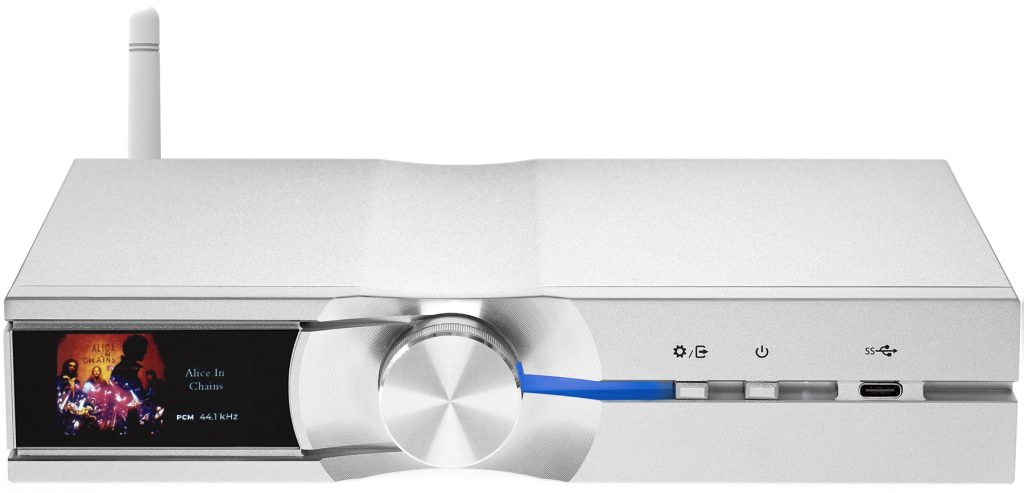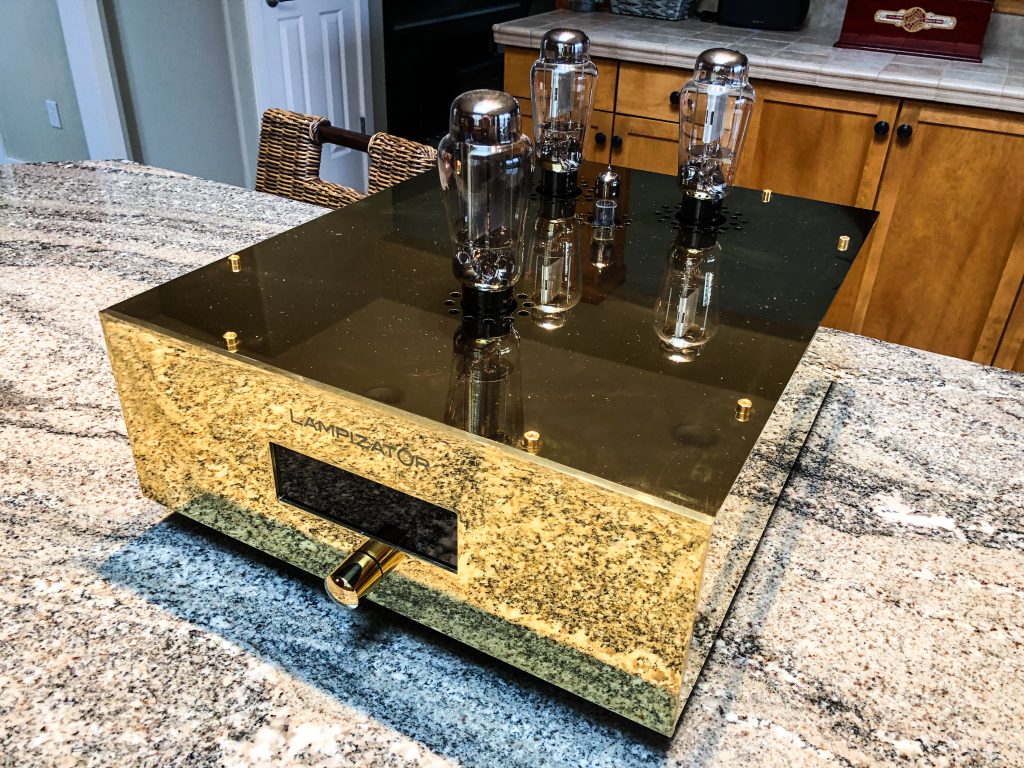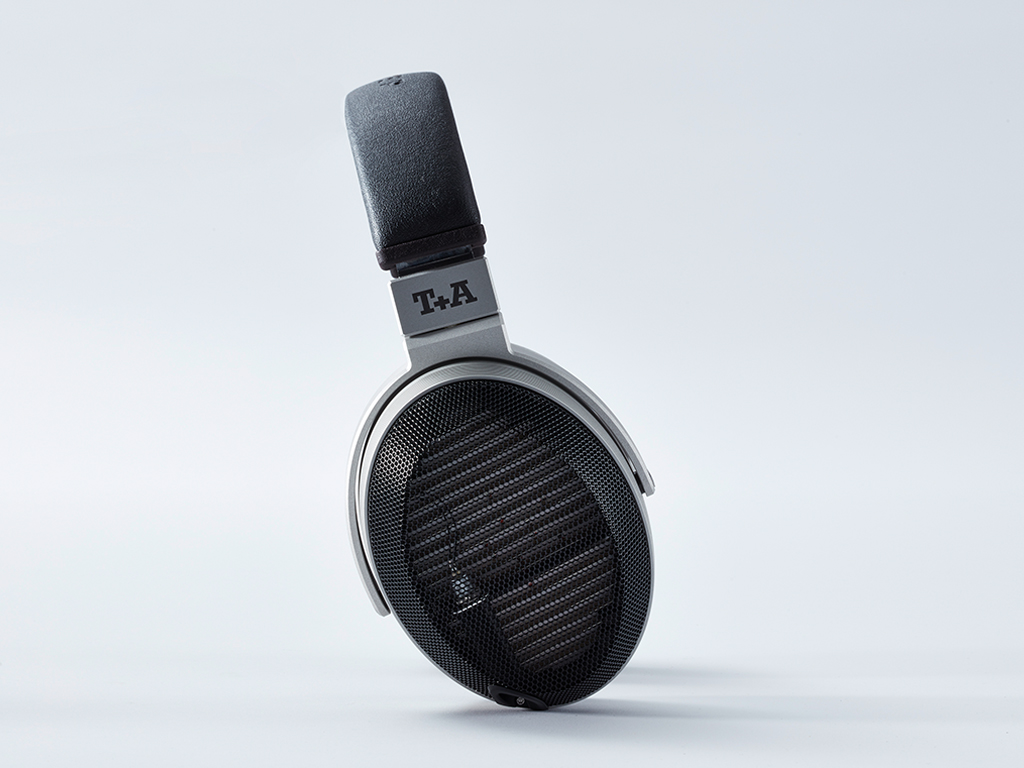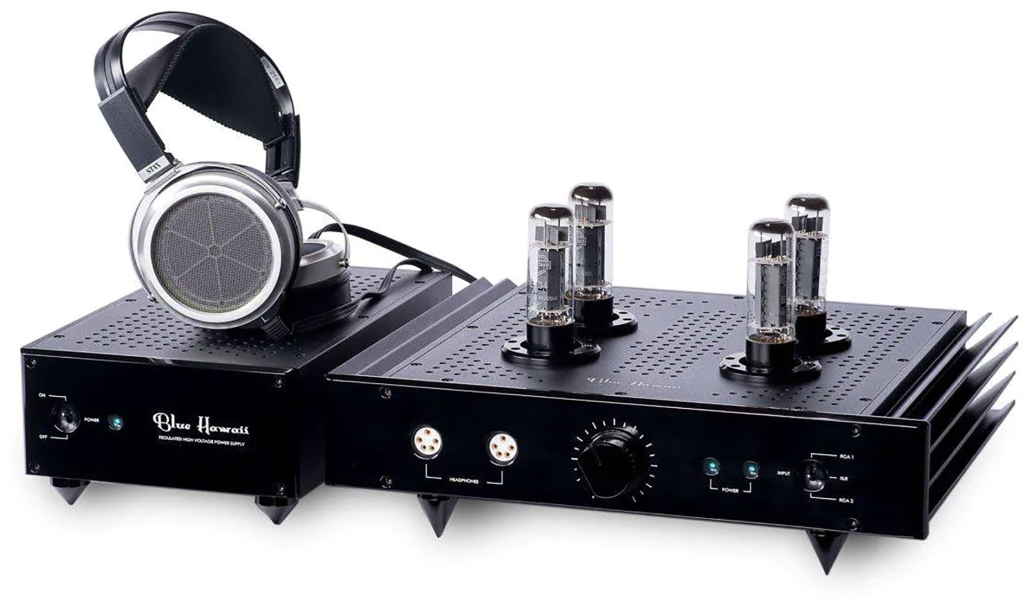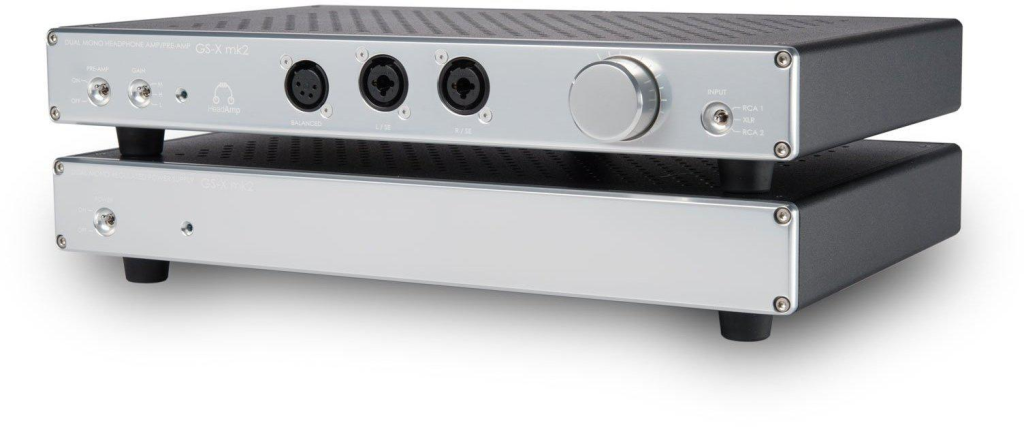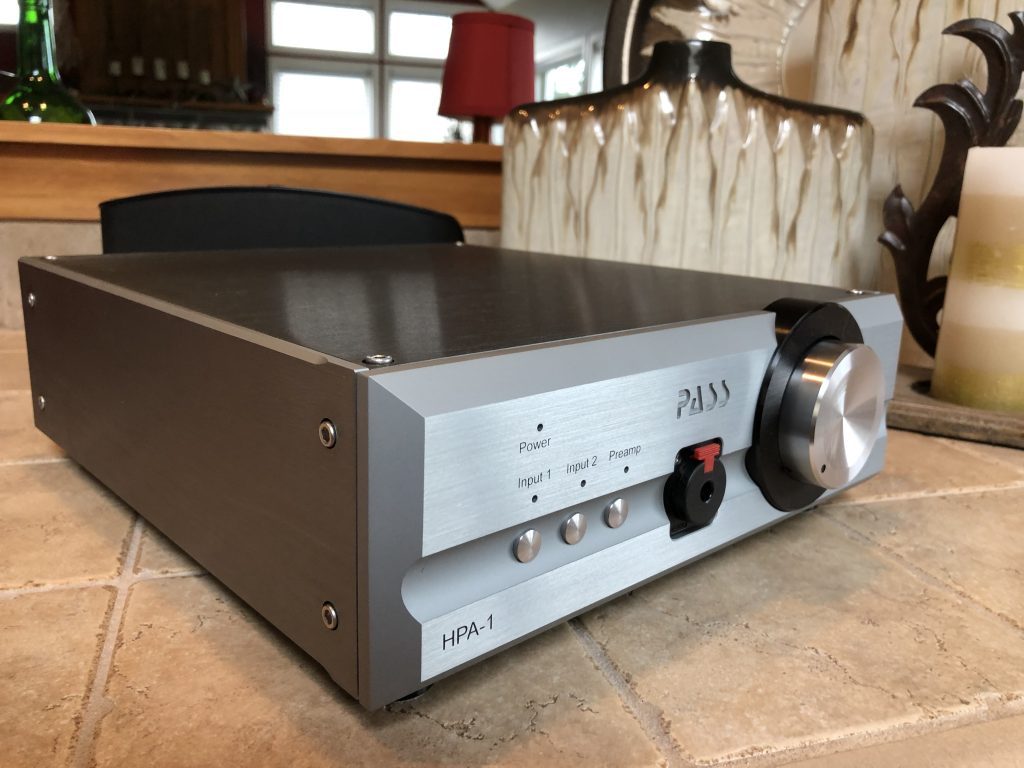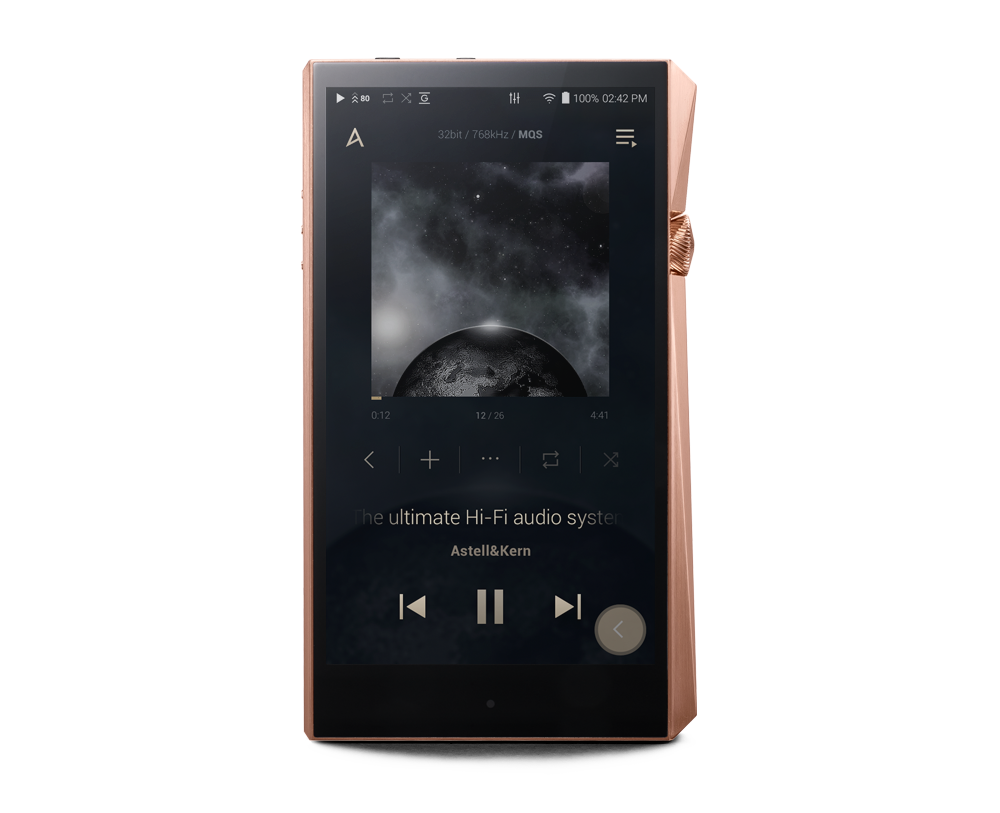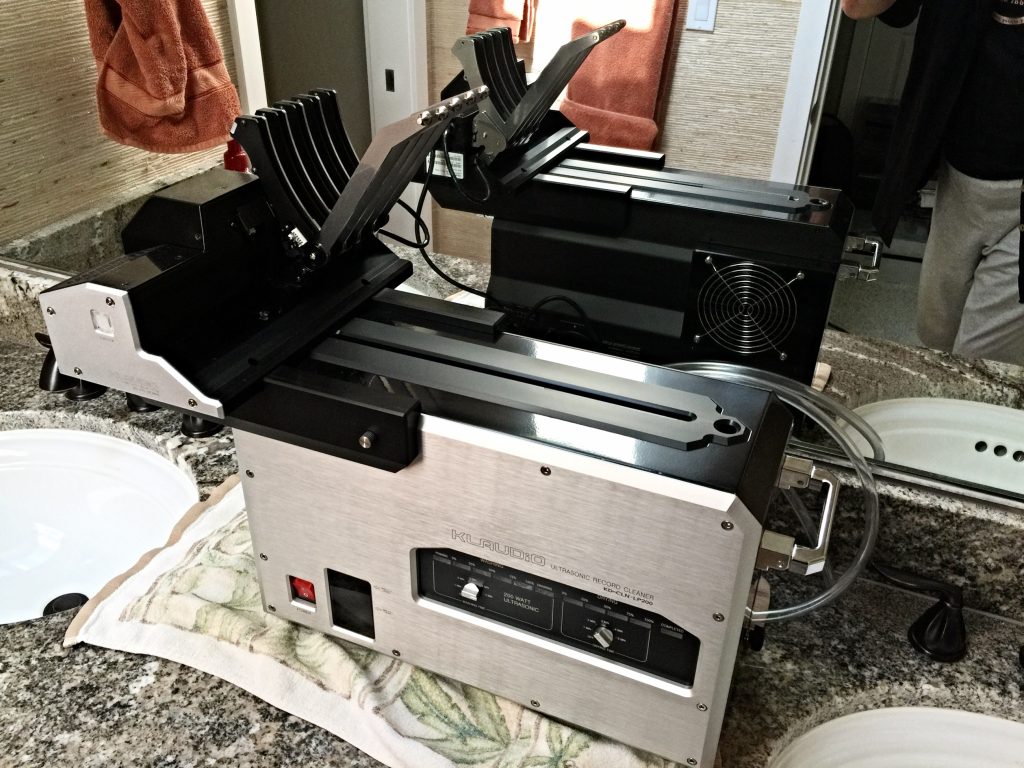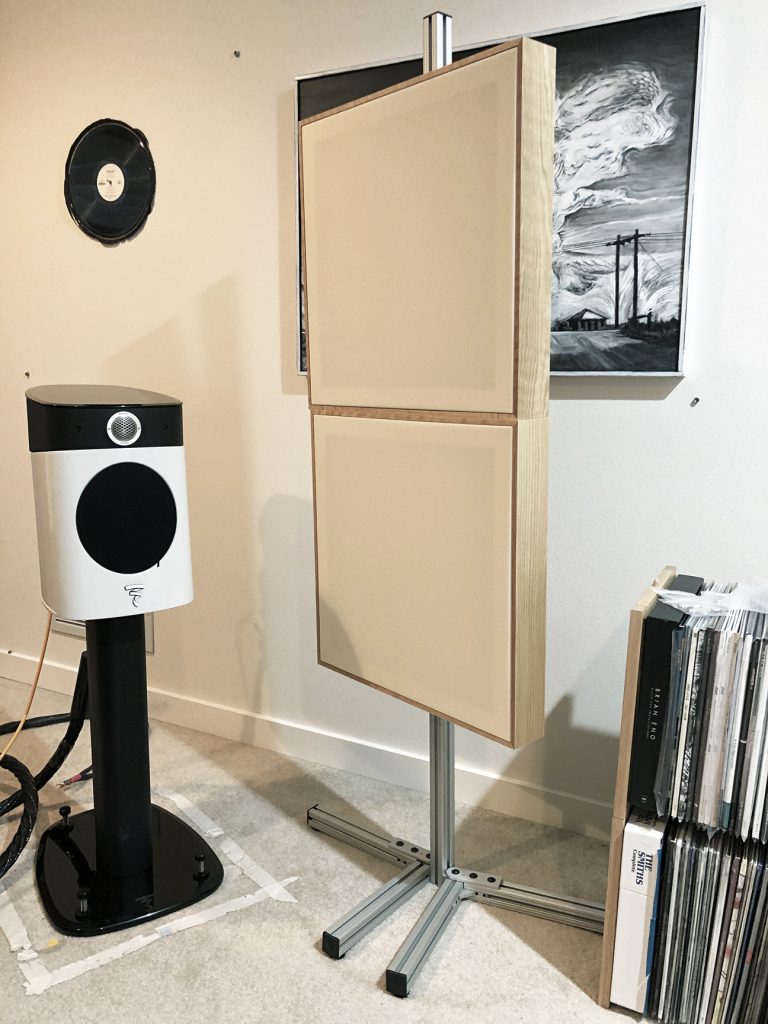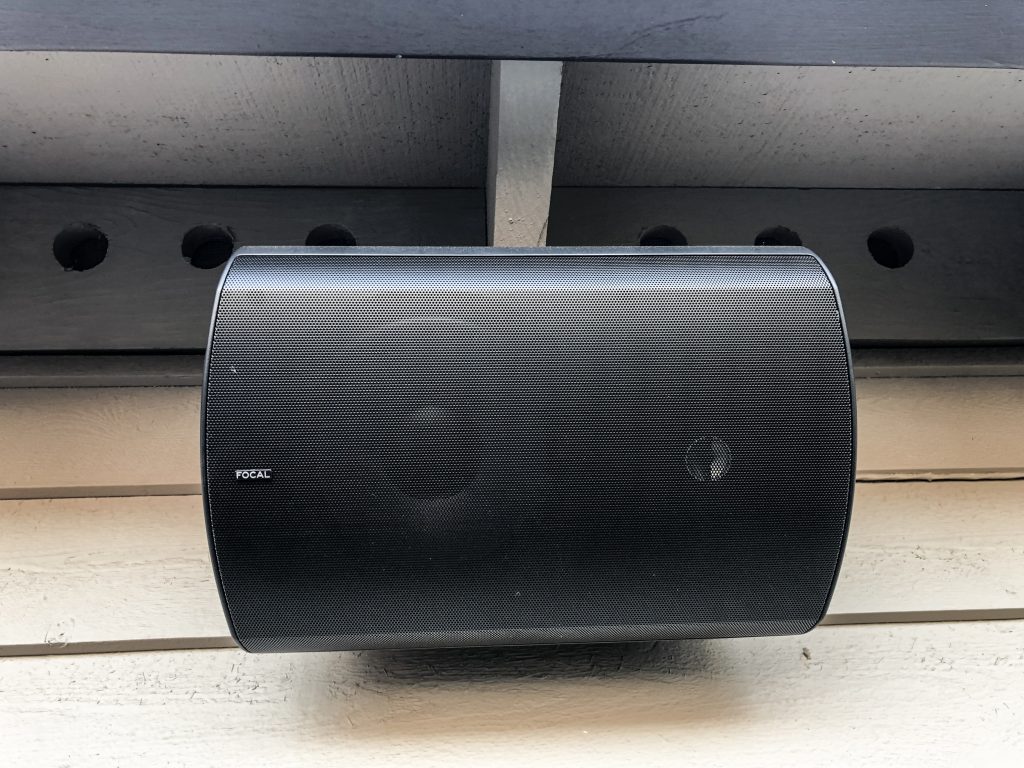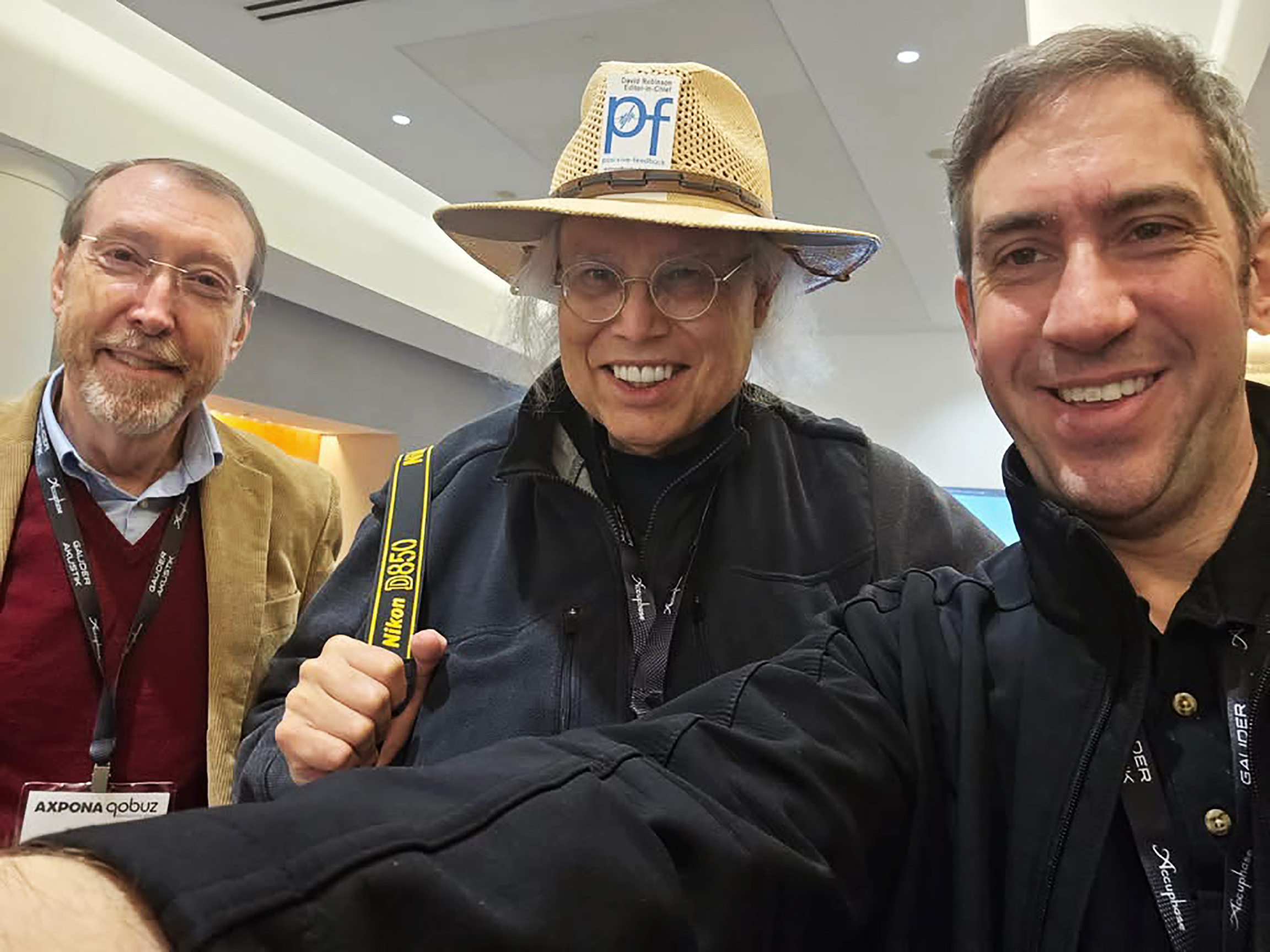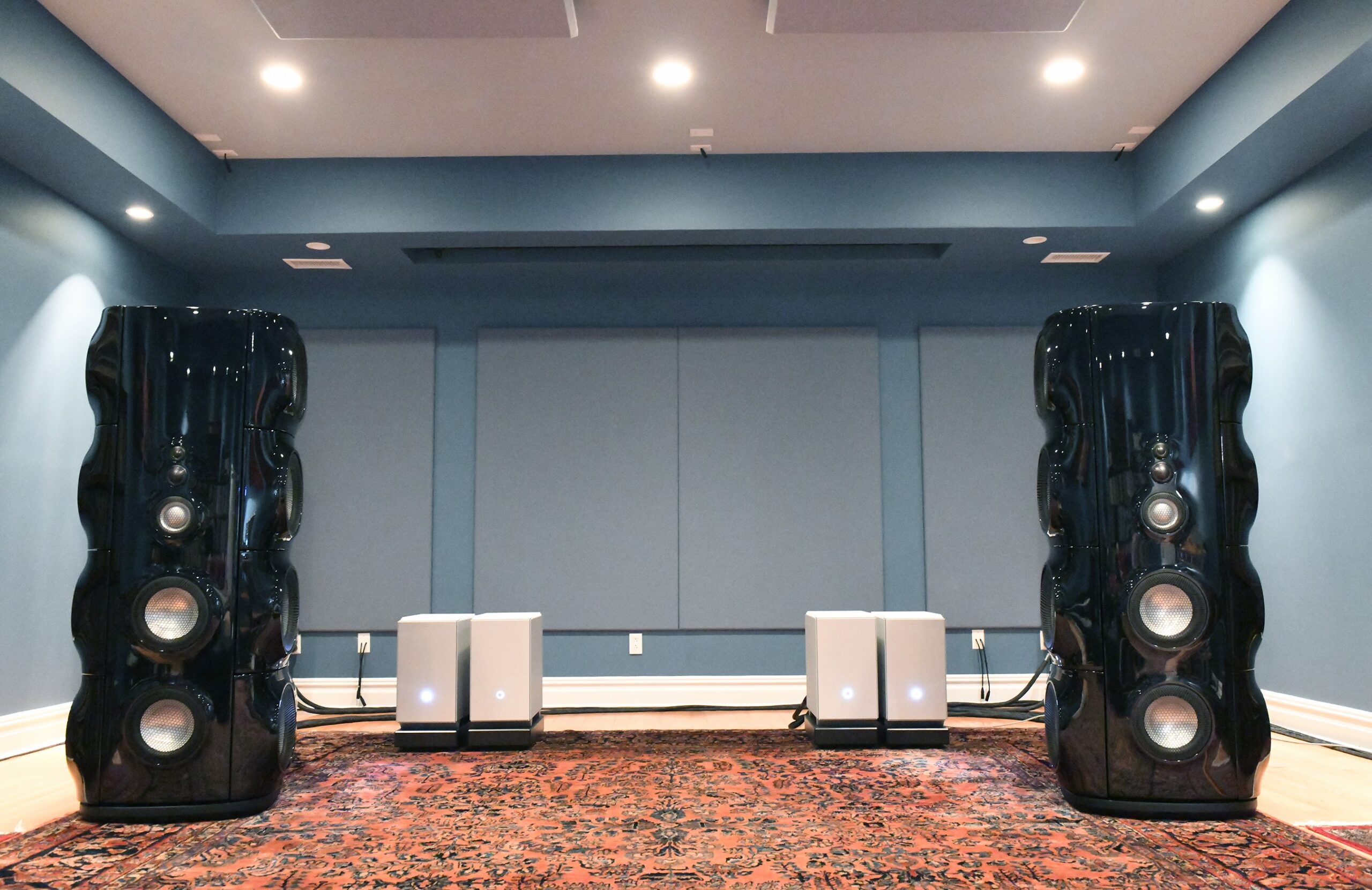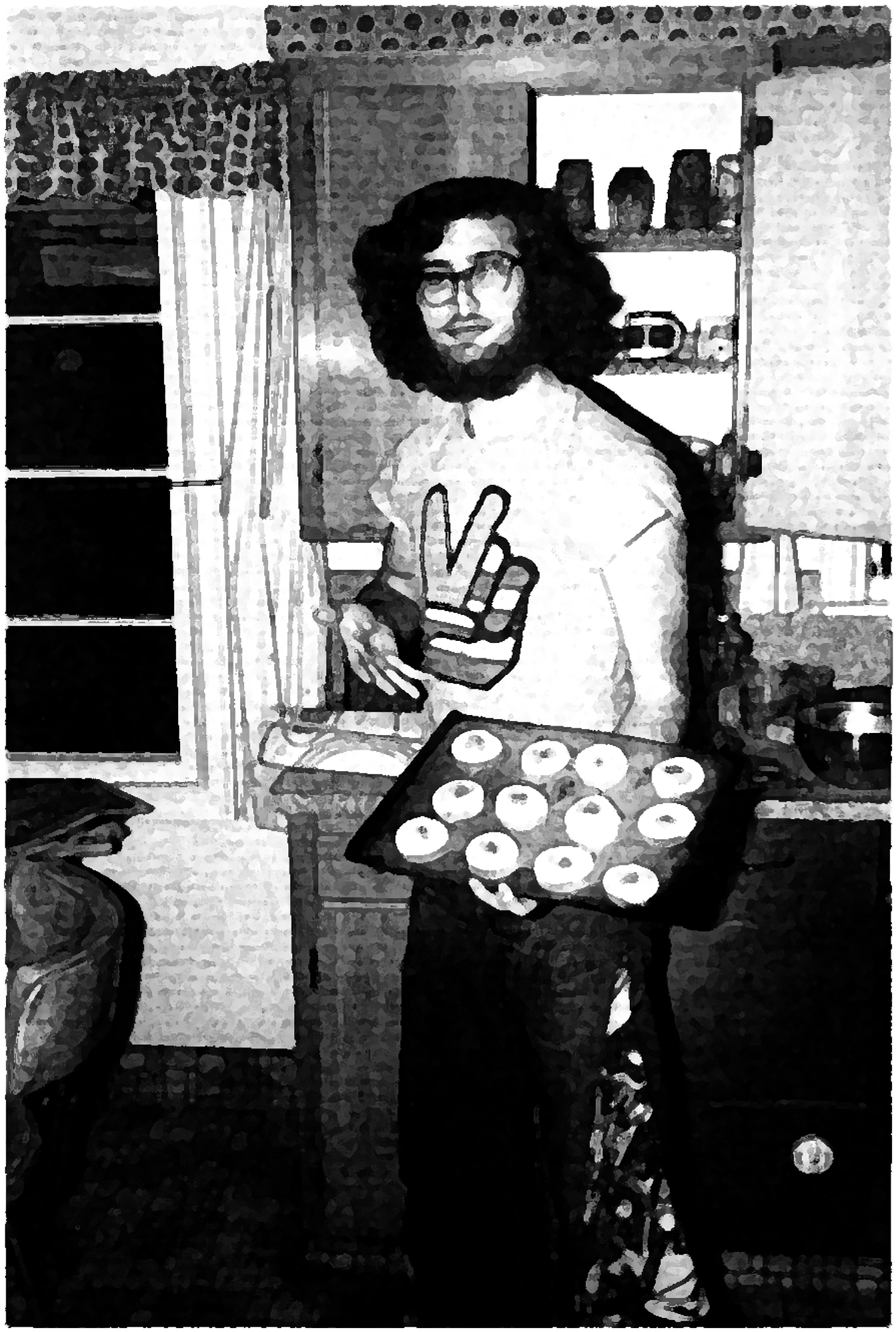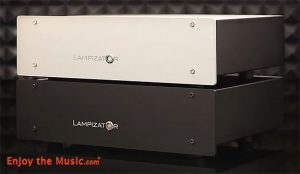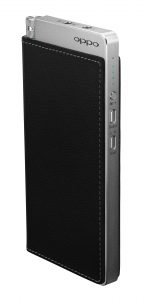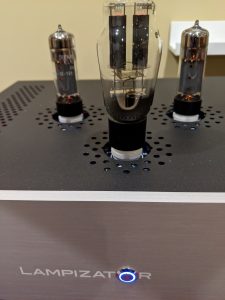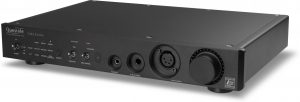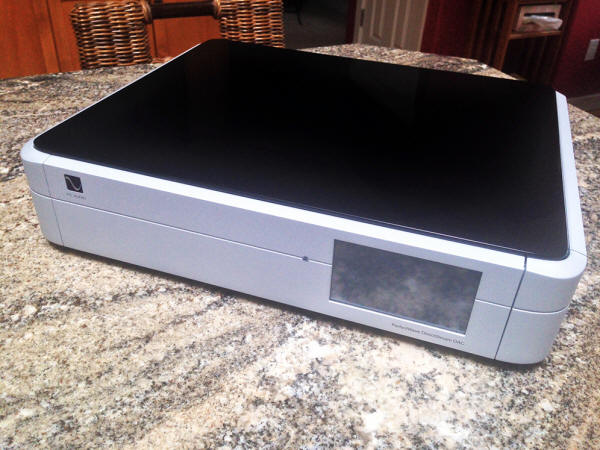
Some things take a long time to write. Some things come easy.
And not everything is War and Peace.
So this is not going to be a typical review. I'm not going to spend much time with the usual sort of hardware sling, other than a quick summary of the basics. No, this will be more a reflective essay about a very significant new DSD DAC, the PS Audio DirectStream. This isn't just another DAC; this is a design that pushes out the envelope of the audio arts a heckuva long ways, and at a not impossible price. That sort of thing doesn't happen often…in fact, for me, it's been a few years.
When, exactly? Well, that's pretty easy: it was in the spring of 2008.
The product? It was the Playback Designs MPS-5 SACD/CD player. (It was later upgraded to computer file playback for both DSD/Double DSD and PCM out to 384kHz/24-bit.)
The MPS-5 actually forced me to rethink the boundaries of what an SACD player could do with SACDs. It also made mere Red Book CDs sound much better than I had ever heard them sound before. The improvement wasn't simply a minor step forward… it was a leap, and in all dimensions. My prior reference standard, the two-box EMM Labs SACD/CD player was no slouch, at all, mind you. In fact, EMM Labs had been my reference for five years or so before the Playback Designs came along. When the PD player arrived, in short order it was clear to me that it had moved the horizon. "There" was now a lot further over there!
The importance of this was so obvious to me that I didn't feel that I could keep this to myself, though I do not normally do comparisons of other products within a review of a given design. It's distracting, and generally not very helpful. (Note that I am no fan at all of "shoot-outs." Fun for audio clubs, perhaps; not helpful at all in audio journalism, in my opinion.) When I wrote my impressions back in September/October of 2008, Issue 39, I had to state that a major change had taken place:
For the first time, after all these years I've heard an SACD player that betters the Meitner. I didn't think it would happen—but now it has.
Therefore, I must now put the Playback Designs MPS-5 in the place of preeminence, and demote the EMM Labs CDSD SE/DCC2 SE to second place in my audio hierarchy.
This evaluation cost me; Ed Meitner immediately canceled all advertising with PFO (which is neither here nor there, as far as I'm concerned), but also cut-off an acquaintance of ten years duration. That was too bad, since he was welcome to submit improved designs in the future in response to the challenge. But no: Despite my best efforts to re-establish our relationship, Ed has remained incommunicado. Yes, Virginia, this sort of thing really does happen in the strange world of high-end audio journalism.
I mention this only to say that it's infrequent that I find the sort of product that moves the game ahead substantially, and that sometimes announcing the news isn't very welcome in the minds of some folks.
C'est la vie!
Well chilluns, listen up. This is one of those moments: The PS Audio DirectStream DSD DAC is a reallyserious product.
Quick Summary
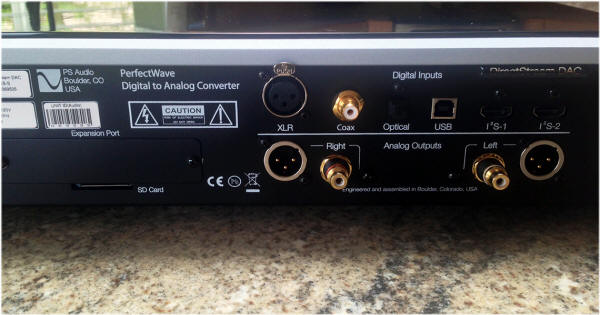
The features and specs of the DirectStream can be pretty easily summarized, since I don't intend to bog down in the obvious with this DAC. It's a very attractive unit, as you can see, substantially built, and not of a mini-DAC form factor. The digital inputs include USB 2.0, I2S (two ports), S/PDIF Coax, AES/EBU, and TOSLINK. Outputs are both balanced and unbalanced left/right. Note that this is a stereo unit only, and not multi-channel. The unit does have an expansion port, to support the addition of a streaming bridge for Internet-based digital music. It had been available previously, but when I checked into the possibility of a review sample, I was advised that the old Internet Bridge had been discontinued. The new Bridge module is not yet available, but should be out by the end of the year. Stay tuned to the PS Audio site for more information about its release.
Finally, there is a slot for an SD card, which allows the user to install firmware updates to the unit. I've already done this once, and found it to be a breeze. You simply power off the DirectStream, insert an SD memory card with the update files into the SD slot, and power up the unit. The DirectStream will automatically do the update for you, letting you know when it's done via the blink codes in the documentation. Easy-sleazy.
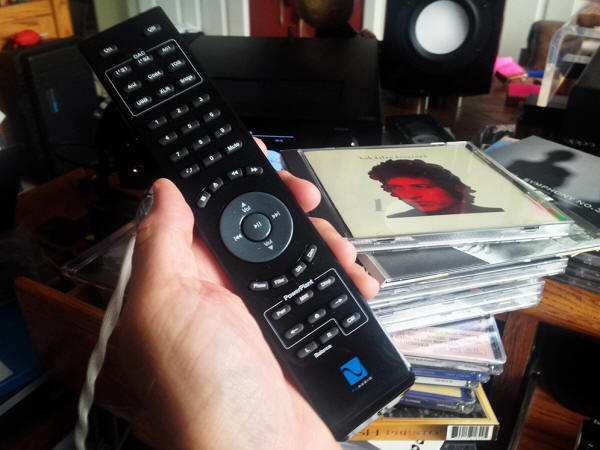
The DirectStream has a handsome and very functional remote control. This makes the switching digital inputs simple, while also controlling parameters like phase, digital filters, display dimming, and the like. It has a section for the PS Audio PowerPlant, as well, for those who own that very fine power conditioning/purification and distribution device. (I have the PS Audio PerfectWave Power Supply 10 here in my reference listening room; it is the main power unit on the source side of the room. It's a Brutus Award winner, and very highly recommended.)
The DirectStream itself does away with the usual off-the-shelf chipset solutions to digital processing. Instead, designer Ted Smith's use of FPGA, and the decision to convert all PCM signals, regardless of clock rate, to DSD, oversample them to 10x the single DSD rate of 2.8224mHz, and then drop them down to Double DSD (5.6448mHz), leads to a unified, remarkable solution to the digital maze that various flavors of PCM otherwise would impose at the chip and circuit level. This isn't the first time that such an approach has been used, of course. Ted freely admits his debt to other DSD designers like Andreas Koch of Playback Designs, who generously shared a concept or two with Ted to help him work through his own design approach. It is like unto what Andreas has done in his own reference-level work with the MPx series of players and DACs, all of which make PCM sound much more pleasant than any purely PCM approach has done. I should also observe that it's somewhat similar to the work that Jürgen Reis has done with his very fine MBL 1611F DAC, employing Delta-Sigma processing creatively at up to 5.6448mHz to produce Redbook CD playback that is to my ears quite fine.
As the DirectStream manual notes in its very cogent design summary:
The heart of DirectStream is the DSD engine itself. Regardless of input format, whether PCM or DSD, all data are upsampled to 30-bits running at 10 times the standard DSD rate and then back down again to double rate DSD for noise shaping.
The internal volume control keeps complete precision: every bit in the input affects the output of the DAC for any volume level. Except for the sigma-delta modulation process itself there is no rounding, dither or other trimming, not to 24-bits, not to 32-bits, not to 48-bits, but rather a full 50. The incoming PCM signal is 30 bits from the upsampling filter and the volume control is 20-bits wide so all 50-bits of the output are used throughout the sigma-delta conversion, requiring more than 50 bits of precision.
Particular attention was paid to the handling of PCM, especially at the level of mere Red Book CDs. This was for two reasons:
1. Because so much music exists in this format, and some of it (unfortunately!) is only found here; and,
2. Because so many of the CDs from the '90s forward are victims of the rock and pop "volume wars," and have terribly oversaturated peaks… in many cases, clipping throughout much of a given song.
The PS Audio manual addresses the PCM question:
While some designs may run out of headroom or approach saturation levels, depending on the source material, the new design opts for an extra top bit everywhere in the digital path coupled with an extra 6 dB of head room in the analog path beyond the 6dB of headroom that SACD uses. The top bit keeps PCM from saturating, even if that PCM was not properly bandwidth limited in the initial recording process.
"…not properly bandwidth limited…" Yeah. Welcome to our world.
And this is a crucial factor in the performance of the DirectStream with Red Book PCM, especially. How we make these damned beasties sound like anything but ear-bleed is the La Brea Tar Pits that we set for ourselves when we made the gross… if understandable… mistake to compromise on the Red Book standard in the first place. Meh.
As a side-note, I must say that the manual for the DirectStream is exemplary in its content and layout. For those particularly interested in design details, I strongly recommend that you read the "Introduction," pp. vi-viii, HERE. It's an excellent collection of talking points about the work that was done to optimize the DirectStream's design for maximum performance.
Tippa'-My-Canoe, and Maya Angelou, too…
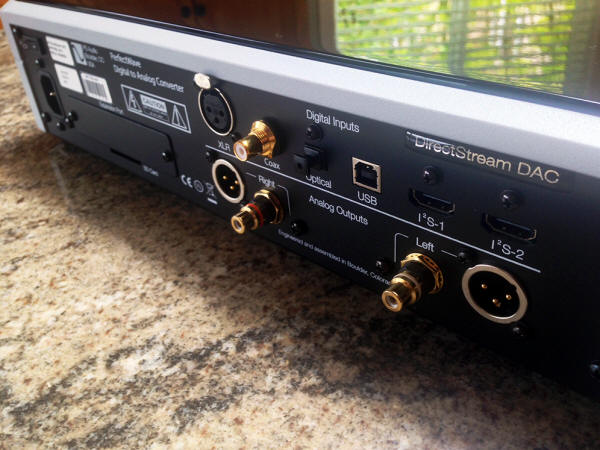
"Yeah, yeah. But how does the damned thing sound?!"
Cheeky! But I don't mind tell you that it's bloody fantastic, amigos. The circle of light around our audio campfire, bogged down in PCM darkness, just got bigger.
Lots.
And if you'll look at the system listing at the end of this essay, you'll see that we didn't skimp on the associated gear. It's an extremely demanding setup, revealing of quality, and mercilessly revealing of problems.

Life in an Editor's Office: Simultaneously Diggin' the DirectStream DSD DAC while feeding the Sony HAP-Z1 ES downstairs in the surround room….
No rush job here. I've taken the time to put hundreds of hours on the DirectStream, and have pounded it mercilessly with the terabytes (literally) of DSD and Double DSD recordings that we have here at PFOCentral. (The DirectStream does not do Quad DSD. Yet.) I also have megatons of PCM files, from 44.1kHz up to 192/24 that are hard disk-based, plus optical discs with more high-resolution files, DVD-A's… all of that. No problems with any of them with the DirectStream… not even the smallest pop or click when switching resolutions. As it should be.
Anyway, critical mass has been achieved, for sure.
On DSD and Double DSD, the DirectStream is the first DAC that I've heard that puts pressure on my reference standard, the Playback Designs MPS-5 with USB-X. After listening to many dozens of DSD recordings, of all sorts of genres, my initial impressions were confirmed: This was truly outstanding performance, with all of the sense of transparency, spaciousness, nuance, and detailed musicality that I've become accustomed to with the Playback Designs family of DACs. Given the similar approaches to the design of their FPGAs, and the fact that both use DSD to handle all digital signals, this is no big surprise. But this is the first time that I've had to say that the Playback Designs standard is seeing a real challenger. And given the similar price-points, the PS Audio DirectStream and the Playback Designs 3-series DACs are now neck-and-neck for quality, which is a real accomplishment for PS Audio.
I would assume that there are differences in the algorithms and programming that each uses…since these are not off-the-shelf chipsets, there would likely have to be… but clearly Ted Smith benefitted from Andreas Koch's help, as well as the input of the many people that he shared his prototypes with over the years.
So, on the DSD side, you can certainly purchase the DirectStream with confidence… it's definitely world-class.
On PCM, the DirectStream is the first DAC that really gives me an experience reminiscent of the Playback Designs DSD DACs. (The MBL 1611F was close on Red Book CDs; this feels closer.) The toughest task, that of making 44.1kHz PCM sound much better than it does, is one that the DirectStream really knocks out of the ballpark. The former zombie is now revealed as something more like Romeo. Every CD that I fed from the ModWright Oppo BDP-105 via S/PDIF coax was very much improved by the DirectStream. The steeliness, glare, and two-dimensional soundstaging were no longer nearly as evident to my bleeding ears. I found that I could go through multiple CDs… Bob Dylan, The Civil Wars, Mike Oldfield, Alan Parsons, Lord Huron, M. Ward, School of Fish, Dirty Vegas… on and on and on. I only had to stop for DSD/SACD/LP breaks from time to time, and not continually.
If you ask me, "So, OK, does it make PCM sound like DSD?" my answer would be no. Only DSD sounds like DSD… 44.1kHz/16-bit will always be what it is. (Any SACDs that you heard that sounded very similar to CDs were undoubtedly mastered from PCM sources, which poisons and makes invalid any comparisons of the possibilities of the two formats. Count on it.)
But …the DirectStream does narrow the gap, and it definitely made my CDs much more listenable. Before this, only the Playback Designs DAC did this for me to this level of performance. In fact, I think you'll find that the DirectStream is able to rescue your CDs from obscurity, and help you to find real pleasure in listening to them again. The DSD playback method employed in the DirectStream is the key to decrappifying our collections of CDs, revealing details, musicality, and even some of the soundstaging and imaging that lay hidden in the PCM encoding. It doesn't quite make a silk purse out of a sow's ear… for that, we must take analog tapes to DSD… but that sow's ear no longer looks nearly as much like a piggy.
And, with either format, the DirectStream really hooks you up with the music!
You see, Maya Angelou got this right. My favorite Maya Angelou quote: "I've learned that people will forget what you said, people will forget what you did, but people will never forget how you made them feel."
The same is true of the best fine audio gear, the most synergistic systems, the best rooms.
Ultimately it really isn't a matter of specifications, measurements (especially if we aren't digging the right holes), the latest technology, or feature list. It's how the component or system makes you feel.
My old audiobud, Dr. Gizmo Rosenberg, had this right.
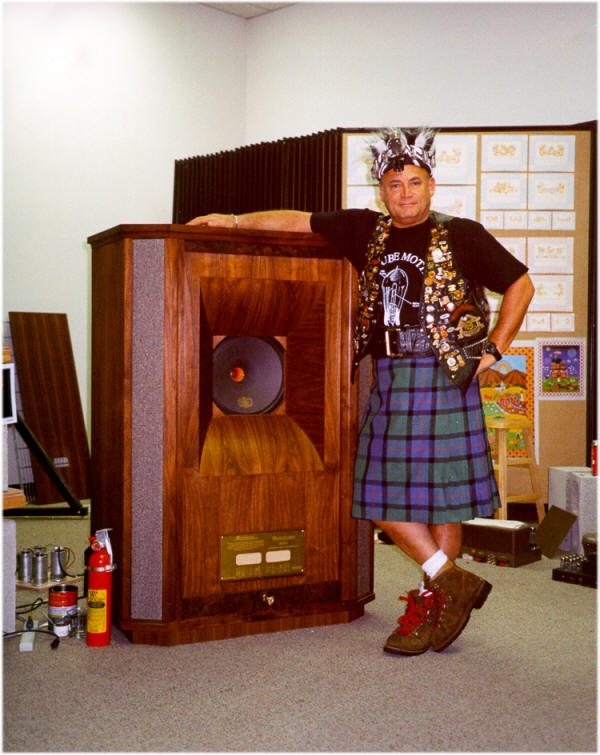
Dr. Gizmo Rosenberg, chief of the Triode Tribe, and Audio Shaman extraordinaire!
Does it move you? Does it connect you with the music? Does it help you to find deep delight, real sorrow, ecstasy, and the passion in our great music and recordings?
Does it make you smile, tap your toe, and dance?!
As he used to put it: Can you sit naked, covered with oil in your listening room, and find audio ecstasy with what you have??!!
Or does it leave you cold? Indifferent? Conflicted? Primed for another round of sell-off-and-buy-whatever-the-hell-is-current?
I hear rumors. The drums, the drums of Dol are a-beatin' again. Measurement mojo again.
I know that some very good people, including some true audiobuds of mine, are extremely interested in measurements, and the correlations thereof, in the audio arts. Their approach is technical and scientific. They've apparently measured this DAC, with real perplexity as the result, it seems. (The same thing happened with Playback Designs, by the way.) It's understandable, though. Unfortunately, some of the traditional digital tools that might be applied to the DirectStream, of PCM origination and application, don't align with DSD DACs like this one, that use the very powerful and flexible Field Programmable Gate Array (FPGA) in its approach to DSD and PCM decoding. There are a completely different set of assumptions in play for DSD playback than there are for PCM. What this seems to lead to, in the case of designs like this one (and, for that matter, with the Playback Designs line, which likewise uses FPGA), are devices that sound extraordinary, but which measure crummy.
You know: The old "sounds great, measures poorly" of things like single-ended triodes, LPs, horns, some turntables, and other buggers like that.
I feel for such folks, but you know the old saying: "If it sounds great and measures poorly, then we're measuring the wrong damned thing." I suspect it has happened again.
You don't need measurements to know this. All that you need is a lot of experience, of the right kinds, and a willingness to admit that our sensor sweeps aren't picking up the cloaked Romulan ship, lurking right over there….
Conclusion
So, what else can I say, amigos?
This is a brilliant design, with exceptional execution, and paradigm-setting sound.
I can tell you, this bloody DAC, DSD to the fore, is a real killer. Flat-out, stone-cold, and damn-straight.
It has been a while since 2008, but now I have to say that the DirectStream DAC is the first real rival to Playback Designs that I've heard. It goes right to the top of my heap of DSD DACs, right next door to the PD Series-3.
The envelope for the audio arts has moved out yet again. To tell you the truth, I couldn't be more pleased! This is good for music, for our recordings, and for us all.
And that is the highest compliment that I can pay to PS Audio's breakthrough product….
Associated System
-
PS Audio DirectStream DAC
-
ModWright Oppo BDP-105 tubed universal player
-
MBL C51 integrated amplifier
-
Evolution Acoustics MMMicro One loudspeakers in desktop deployment
-
Skogrand Cables SC Ignis reference loudspeaker cables
-
Wave Kinetics 2NS attenuation isolation feet
-
Stein Music Speaker Match Signature crossover enhancers
-
Furutech Daytona 303 Power Conditioner and Distributor
-
HP Pavilion DV-8T i7 notebook computer with 8GB RAM, Windows 7 Ultimate, 64-bit, and multiple 3 TB and 4 TB USB external hard drives
-
JRiver Media Center 19 for Windows
-
PranaWire Photon USB cable
-
Kubala-Sosna S/PDIF coax cable
-
Power Cables by Silent Source and Furutech; AC filtering adapters by Furutech.
Price: USD $5995.00
PS Audio
4826 Sterling Drive
Boulder, Colorado 80301
720.406.8946
www.psaudio.com
